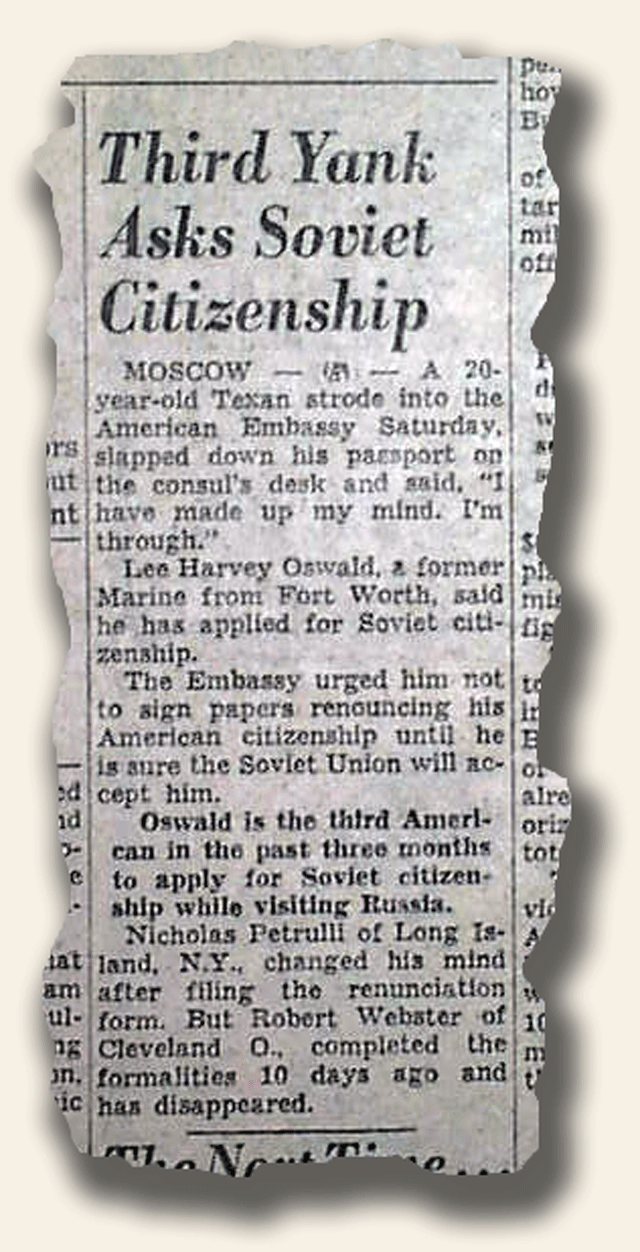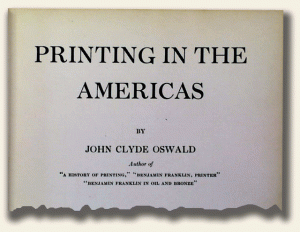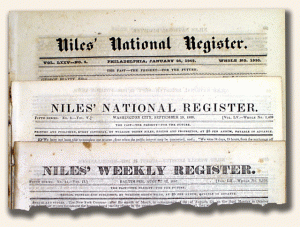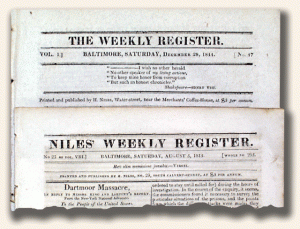Collectible themes… additional thoughts…
September 28, 2009 by GuyHeilenman · Leave a Comment
There is an endless variety of ways to collect early newspapers.
- The vast array of newspaper dates, titles, sizes and content would seem almost formidable should one decide to collect newspapers without a theme or focus. Even a small percentage of every newspaper title published would not only be a formidable task to assemble but would be too cumbersome to organize and store.

- But collecting by theme offers a fascinating challenge to cut through the forest of available titles to add only those issues to a collection which fit the scope of a special interest. And the areas of interest can be endless.
- Whatever one’s interest might be a newspaper collection can be assembled as an interesting complement. You like old radios? Collect newspapers reporting the development of the radio and its antecedents from the telegraph to satellite radio. Or collect newspapers with advertisements of the radios in your collection. You like military history? Collect newspapers reporting major battles of each of America’s conflicts from the French & Indian War to the Gulf War. Politics? Collect issues covering the elections, or inaugurations of each president from George Washington to the present. Or collect at least one of each of the annual state-of-the-union addresses beginning with Washington (yes, he started the tradition which continues today). Or perhaps presidential deaths, or significant policy pronouncements.
- The Wild West, 20th century gangsters, sports heroes, the weird & bizarre, major tragedies, scientific developments are just a few themes. More specific topics can result in a very focused collection themed on just the Civil War or World War II or Western exploration or 19th century baseball to name a few.
- Less event-focused collections can also result in an intriguing variety of issues, such as one newspaper from every decade from the 1650’s to the present showing the progression & evolution of newspaper publishing from its infancy to the internet. Huge headlines of any event can provide for a very dramatic & displayable collection, or erroneous reports (Dewy Defeats Truman” is the most famous, but there are many more), printing errors (wrong dates, upside-down type, misspelled headlines, etc.) can result in an interesting collection.
- Given the tens of thousands of titles and the 400 year span of newspaper publishing the themes of collecting are virtually endless. Explore and widen your interest by adding newspapers to your collection. A fascinating world of collectibles awaits you.
Note: If you are still having trouble deciding on a theme upon which to begin centering your collection, consider the History’s Newsstand Store’s or the Rare & Early Newspapers’ list of categories as potential starting points. Many collectors began their collections by amassing a low-end (low priced) issue from each decade from the mid-1700’s through the mid-20th century. A basic issue from each U.S. President’s term of office is also a popular theme.
The list of collecting strategies is endless. Feel free to contribute ideas of your own.
Desperate spy tactics…
September 26, 2009 by TimHughes · 1 Comment
 This interesting item found in the Confederate newspaper “The Daily Delta” from New Orleans, Feb. 20, 1862, speaks for itself.
This interesting item found in the Confederate newspaper “The Daily Delta” from New Orleans, Feb. 20, 1862, speaks for itself.
Alaska’s first newspapers…
September 24, 2009 by TimHughes · 2 Comments
The very first newspapers published in a state or territory–particularly those west of the Allegheny Mountains, have always been of interest to me and I suspect others as well. To share the wealth of information found John C. Oswald’s “Printing In The Americas” I will, from time to time, reflect upon the first newspaper or newspapers in many of the United States. Alaska’s interesting history will be first.
 The first periodical issued for distribution in Alaska was in handwritten form. It was a monthly “published” for the information of a force of men laying a telegraph line connecting Alaska with Siberia. Its name was the “Esquimeaux” (we now spell ‘Eskimo’), begun Oct. 14, 1866 and continued for twelve numbers, ten done at Libbysville, Port Clarence, Russian America, and two at Camp Libby, Plover Bay, Eastern Siberia. The completion of the Atlantic cable having put an end to the telegraph project, the manuscript of the “Esquimeaux” was taken to San Francisco & issued in printed form beginning Oct. 31, 1867.
The first periodical issued for distribution in Alaska was in handwritten form. It was a monthly “published” for the information of a force of men laying a telegraph line connecting Alaska with Siberia. Its name was the “Esquimeaux” (we now spell ‘Eskimo’), begun Oct. 14, 1866 and continued for twelve numbers, ten done at Libbysville, Port Clarence, Russian America, and two at Camp Libby, Plover Bay, Eastern Siberia. The completion of the Atlantic cable having put an end to the telegraph project, the manuscript of the “Esquimeaux” was taken to San Francisco & issued in printed form beginning Oct. 31, 1867.
The first formal newspaper which circulated in Alaska was actually printed in San Francisco beginning March 1, 1868, shortly after the purchase of Alaska by the United States, titled the “Alaska Herald“. It was semi-monthly & printed in both Russian & English.
The “Alaska Times” started at Sitka on May 1, 1869 and continued there until 1870 when it was moved to Seattle where–according to Oswald–just two numbers were published. But our inventory shows at least 20 numbers having been published in Seattle.
“News Rooms”: a curiosity of the past…
September 21, 2009 by TimHughes · Leave a Comment
One last excerpt from Clarence Brigham’s book “Journals & Journeymen” is worthy of sharing with follow collectors as it explores a part of newspaper history of which most are unaware. The chapter is titled “News Rooms”:
 An interesting custom in newspaper history was the establishment in the early 1800’s of news rooms at nearly all of the larger towns. Somewhat akin to this idea was a project carried out at a much earlier day at Bridgeton, New Jersey. Here in December 1775, & continuing for two months, a weekly paper called “The Plain Dealer”, consisting of essays but with topics relating to the problems of the colonies, was written out in manuscript and posted up in Matthew Potter’s tavern. It enabled readers to gather at a central meeting place and peruse a weekly publication, which they would not trouble, or perhaps could not afford, to purchase.
An interesting custom in newspaper history was the establishment in the early 1800’s of news rooms at nearly all of the larger towns. Somewhat akin to this idea was a project carried out at a much earlier day at Bridgeton, New Jersey. Here in December 1775, & continuing for two months, a weekly paper called “The Plain Dealer”, consisting of essays but with topics relating to the problems of the colonies, was written out in manuscript and posted up in Matthew Potter’s tavern. It enabled readers to gather at a central meeting place and peruse a weekly publication, which they would not trouble, or perhaps could not afford, to purchase.
Soon after 1800 reading rooms sprang up in several towns. In Boston the Anthology Reading Room was established in 1806, with 160 subscribers, and making available all the leading newspapers of the country. In 1808 Samuel Gilbert established at Boston what may have been the first commercial news room in the country. It was located in the Exchange Coffee House, erected in 1808, with its “Reading Room and Marine Diary” on the entrance floor where newspaper files could be consulted.
In New York, John H. Payne in 1811 opened a reading room where could be found the most important newspapers and magazines of the day. Charleston had a newsroom in 1813 where the terms were ten dollars for subscribers and strangers one dollar a month. In fact, almost every city and larger town before 1820 had its news room where leading newspapers were regularly filed. To enumerate them would require a lengthy chapter and necessitate an exacting study of early newspaper advertisements. Unfortunately there is no record of a new room proprietor preserving his files for posterity.
Before they became famous…or “infamous”…
September 19, 2009 by TimHughes · 2 Comments
 A special desire for many collectors is to find a newspaper mentioning a name which would not become famous for many years, such as the “Lincoln & Herndon” attorney advertisements from Springfield, Illinois in 1857, or a newspaper ad noting John Wilkes Booth appearing in a play in 1863.
A special desire for many collectors is to find a newspaper mentioning a name which would not become famous for many years, such as the “Lincoln & Herndon” attorney advertisements from Springfield, Illinois in 1857, or a newspaper ad noting John Wilkes Booth appearing in a play in 1863.
The item shown in the photo fits this category, appearing on the front page of the “Detroit Free Press” in its November 1, 1959 newspaper. If a Kennedy assassination plot existed, the plans may have begun as early as…
My Collecting Story… Simon Marshall-Jones…
September 17, 2009 by GuyHeilenman · Leave a Comment
 Being an artist and writer, I possess a fascination with the world and the universe that isn’t limited by borders. Ever since I was a young boy, living in a small Welsh town, I have always wanted to know about the wonders out there, and before I had reached the end of my first decade I had an avid interest in both archaeology and astronomy, as well as other sciences. I have carried that abiding sense of wonder into my adult life and it continues to inform my everyday existence.
Being an artist and writer, I possess a fascination with the world and the universe that isn’t limited by borders. Ever since I was a young boy, living in a small Welsh town, I have always wanted to know about the wonders out there, and before I had reached the end of my first decade I had an avid interest in both archaeology and astronomy, as well as other sciences. I have carried that abiding sense of wonder into my adult life and it continues to inform my everyday existence.
Collecting is as much part of my genes and psyche as my diabetes is part of my genetic make-up and creativity is a part of my psychology. Over the last four decades or so, I have collected everything from pop cultural artefacts (obscure vinyl records from seriously underground outfits, for instance) to high-brow books on unusual subjects (eg, the sociology and politics of death, and the history of Freemasonry). However, the one collecting habit that has given me the greatest pleasure is the one that harks back to those childhood interests – working towards amassing a complete run of Scientific American, from its foundation in 1845 until the present day.
I fell into collecting the magazine quite by accident. In each and every current issue is a column that looks back at articles and items of news from previous issues in its long history – 50, 100 & 150 years ago. It occurred to me that they were only the highlights, mere gilded snippets of a broader tapestry, inevitably giving only a minute glimpse of the fuller picture. I felt that, rather than wonder what else there was in each of these vintage issues, I would chase them down and read them for myself. Not only is this venerable magazine an almost complete history of science, it is also a wonderful tracker of social history as well. The progress of scientific discovery was much slower the, or so it appears, but no less momentous for all that. Scientific American spans steam, automobiles, airplanes, the American Civil War, both World Wars, the discovery of penicillin, insulin, computers, man’s first exploratory ventures into space and into the depths of the oceans – and it’s all been reported in the pages of Scientific American over the past nigh-on 165 years. That in itself persuades me that collecting the magazine is an exceptionally worthwhile enterprise, and often sends a frisson of delight down my spine.
The Next Must-Read Book for Newspaper Collectors
September 14, 2009 by admin · 9 Comments
 Mott, Emery, Thomas, Tebbel and Brigham are household authors on the bookshelves of most newspaper collectors, but another name needs to be added to the list. Eric Burns.
Mott, Emery, Thomas, Tebbel and Brigham are household authors on the bookshelves of most newspaper collectors, but another name needs to be added to the list. Eric Burns.
Burns is the author of Infamous Scribblers: The Founding Fathers and the Rowdy Beginnings of American Journalism.
Most of us have read — on more than one occasion — about the history of Public Occurrences, The Boston News-Letter, Zenger’s New York Weekly Journal and Franklin’s Pennsylvania Gazette. But how often do we get to read these stories and many distinct others from a book published in the 21st century?
Perhaps what thrilled me the most about this book was its style. To me, Burns was masterful at marrying the story-telling flair of David McCullough with the newspaper history acumen of Mott, Emery and others. More so, I enjoyed learning several fun facts and exciting stories about many of the newspaper titles I see for sale at rarenewspapers.com or even hold in my own collection.
The Boston Gazette, according to Burns’ C-SPAN presentation on his book, is the most influential newspaper this country has ever known. He says the Gazette got us into the Revolutionary War, sped up the course of the war and may have even determined the outcome of the war. A good chunk of Infamous Scribblers is dedicated to supporting this thesis.
“Almost certainly the war would not have ended with an American victory in a period of seven years — from first shot to signed treaty — had not the newspapers constantly reminded the colonists of the cause they shared, thereby inspiring the valor of soldiers, and the patience and support of civilians,” Burns said.
He points out that newspapers were the only form of media at the time and served as the great unifier of our nation during a time when America “needed unity as much as we needed ammunition.”
Here are a few fascinating excerpts from Infamous Scribblers:
On a printer’s disincentive to publish a newspaper: “Despite a New World population of more than 300,000 by 1700, there were not enough customers of newspapers — too few English speakers in America, too few towns and villages that were too widely scattered to allow for news to be gathered efficiently and a paper to be distributed economically.”
On a newspaper’s role in the Revolutionary War: “It was Franklin, though, who most succinctly and accurately assessed the role of the media in the days leading up to the war. It was he, astute as ever, who pointed out that the press not only can ‘strike while the iron is hot,’ but it can ‘heat it by continually striking.'”
On Sam Adams: “The least ethical newsman of the entire colonial era, if not the entire history of American journalism.”
On 18th century journalism: “As a rule, newspaper publishers of the time did not chase after interviews or hustle to the scenes of events with their juices flowing and pen fingers twitching. For the most part, they were denizens of the print shop, preferring that the news be spoken in their ears or slipped under their doors — that it be delivered to them, in other words, as spices were delivered to the grocer or bolts of clothes to the tailor.”
On reporting and publishing during the Revolutionary War: “The Revolutionary War was not an easy one to cover. For one thing, once the fighting started there was more news than ever but no more shipments of ink or type or spare parts for the presses coming into American ports. There were no more shipments of paper either, and, as for the quantities still available or smuggled into the colonies from a friend in the motherland or a trader in another European nation, there were higher priorities for it than journalism.”
On an unlikely spy embedded as a printer: “Jemmy Rivington’s Tory newspaper, the Royal Gazette, was extremely critical of George Washington. However, Rivington was also a spy who passed along secrets of the British navy to colonial leaders. On one occasion, Rivington helped break a British code that almost surely saved American lives during one of the war’s earlier battles.”
On printing business diversification: “Colonial printers did not just publish newspapers… they continued to publish documents for agencies of government and various other materials such as sermons, speeches, and contracts, for private clients… they turned out pamphlets, Sunday supplements of a sort, commentaries on the news of the day…”
On the importance of 18th century newspapers: “Perhaps the importance of the press to the outcome of the war can be exaggerated, but not easily and not by much. It was newspapers that kept the colonies informed of the progress of the fighting in a way that letters and patterers could not have done, and in the process united the colonies in a way that was beyond the ability of the jerry-built wartime government.”
This post was authored by Todd Andrlik, a collector of rare and historic newspapers that you can follow at toddand.com and raglinen.com. Todd recently launched the Historic Newspapers Network for the newspaper collecting community.
Politicians can state the obvious…
September 12, 2009 by TimHughes · Leave a Comment
 The little tidbit shown in the photo appears in “Harper’s Weekly” of January 22, 1876.
The little tidbit shown in the photo appears in “Harper’s Weekly” of January 22, 1876.
Early printing in the New World…
September 10, 2009 by TimHughes · Leave a Comment
Another book I find very useful, although out of print, is “Printing In The Americas” by John Clyde Oswald, 1937. From time to time I will print excerpts from it which hopefully will be of interest to collectors, including the following which touches upon the very earliest years of printing in the “new world”.
 “Printing in the English colonies began during the first half of the 17th century, at which time the art was at a low ebb in Europe, and it is therefore not surprising that the printers who came to the western shore of the Atlantic Ocean were not of outstanding ability; they were but representative of the class from which they sprang.
“Printing in the English colonies began during the first half of the 17th century, at which time the art was at a low ebb in Europe, and it is therefore not surprising that the printers who came to the western shore of the Atlantic Ocean were not of outstanding ability; they were but representative of the class from which they sprang.
The first person to print in what is now the United States was a boy 18 years of age, upon whose immature shoulders had unexpectedly been thrown a heavy burden of responsibility. This boy, Matthew Daye (later in life he dropped the final ‘e’), began to print in a newly built house on the bleak shore of New England, on the edge of the forbidding wilderness that surrounded it on all sides but that which faced the sea. The year was 1638, just 18 years after the Pilgrims landed.
A new nation was in the making, in which life eventually came to embrace everything worth while, but in which in the beginning, as was to be expected, artistic accomplishment & progress were almost wholly absent. The settlers were too much occupied with the immediate necessity of clearing away the forests, harnessing the water power, building homes, founding towns and setting up local governments, to be able to find time to devote to the refinements of daily living. The primal wants had first to be satisfied. Then came the Revolutionary War, with its strain upon their resources, and later the need of facing and solving the world problems that accompanied the birth of the new nation.
The scarcity of great printers in Europe during the 17th century is to be ascribed to the fact that printing, controlled by Church and State, had ceased to be a means of art expression and had become merely a vehicle for the transmission of information (and misinformation). In England the number of printers and type founders was limited, and they were licensed and operated under strict surveillance. Restrictive measures of a somewhat similar nature were enforced in other countries.
The ruling powers endeavored to stretch a restraining army across the Atlantic to the colonies newly planted there, and they were at first partly successful because they were represented by governors subservient to their whims. the oft-quoted remark of Sir William Berkeley, governor of Virginia, will be recalled:
But, I thank God, there are no free schools nor printing, and I hope we shall not have these hundreds years; for learning has brought disobedience, and heresy, and sects into the world, and printing has divulged them, and libels against the best government. God keep us from both.”
King James II, on ascending the English throne in 1685, sent this instruction to Governor Dongan, in New York:
“And for as much as great inconvenience may arise by the liberty of printing within our province of New York; you are to provide by all necessary Orders that noe person keep any press for printing, nor that any book pamphlet or other matters whatsoever bee printed without your special leave & license first obtained.”
For 40 years thereafter this paragraph appeared in the instructions to colonial governors. Great was the respect paid by the common people of Europe to constituted authority. The bowed head and bended knee were therefore attitude familiar to the colonists; but contact with this constituted authority came to them only through the local governors and their minions, and often the closeness of the contact disclosed the fact that the supposed gods were in reality made of clay. Respect, reverence even, might for a time be publicly shown for a governor in gold lace, who proved on acquaintance to be vain, shallow, and incompetent, but it could not be privately felt, and under such circumstances the public showing was certain in time to come to an end.”
“New Series” of a newspaper…
September 7, 2009 by TimHughes · Leave a Comment
 A recent inquiry by a concerned customer about the words “fifth series” printed in the dateline of his “Niles’ National Register” prompted me to share my comments with our blog readers should you have similar concerns of such notes atop this and other titles held in your collection.
A recent inquiry by a concerned customer about the words “fifth series” printed in the dateline of his “Niles’ National Register” prompted me to share my comments with our blog readers should you have similar concerns of such notes atop this and other titles held in your collection.
Through the life of any newspaper which lasted beyond ten years it would not be uncommon for the title to change, either slightly or dramatically. This could happen for a number of reasons, such as the merging with another newspaper, the purchase of the paper by a new publisher, new city of publication, an altering in the size, theme, or format of the newspaper, etc. While some titles made no note of such changes in their volume and issue numbering, some chose to create a “new series” and start anew with the volume & issue numbering.
 “The Weekly Register“, which began in Baltimore, chose the latter. The photos show five of the title or location changes in a 38 year time spread, not to mention size and type font changes as well. Note that its location moved from Baltimore to “Washington City” to Philadelphia.
“The Weekly Register“, which began in Baltimore, chose the latter. The photos show five of the title or location changes in a 38 year time spread, not to mention size and type font changes as well. Note that its location moved from Baltimore to “Washington City” to Philadelphia.
Fortunately Niles chose to also retain the original volume numbering as well (right side of the dateline) as well as the “whole number”, or the number since the very first issue was published. Other titles did not choose to do so, making it more difficult to determine the newspaper’s age.


